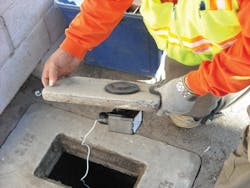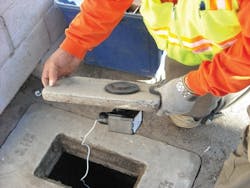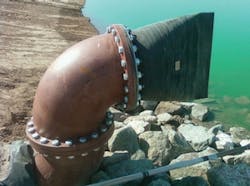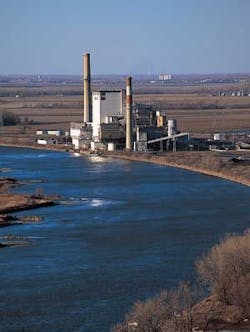Plant Staff Upgrades Centrifuge Control System
By Jeremy Poarch
Staff at the Moccasin Bend Wastewater Treatment Plant in Chattanooga, TN, needed to upgrade the aging control system for their two centrifuge units. After evaluating the options, they selected, designed and installed a Programmable Automation Controller (PAC) system they purchased from an online supplier.
The two centrifuge units at the 220 mgd facility remove water from the thickened sludge produced by primary clarification, anaerobic digestion, and activated sludge processes. The older control system was installed in the mid-1990s and consisted of a programmable logic controller (PLC) and a CRT-type HMI for control of both centrifuge units. Plant staff had already replaced the HMI once in the past five years, and the current unit was beginning to show early signs of trouble, so they were faced with a choice: purchase a new HMI or construct a new control system with updated and enhanced functions for each centrifuge.
After evaluating PLCs, PACs, and HMIs, they selected, designed, and installed a PAC-based control system. The Productivity3000 PAC is a compact logic controller that combines the features and capabilities of a PC-based control system with that of a typical PLC. Staff also selected a C-more HMI. Both the PAC and HMI were supplied by AutomationDirect (www.automationdirect.com), an online supplier of controls and automation components.
Staff decided to install one HMI and one PAC per centrifuge. This would allow them to take one unit completely out of service for maintenance without affecting the other unit in operation. It would also provide greater flexibility as one centrifuge could now act as a redundant backup for the other.
Centrifuge Control
Operators start the centrifuge, monitor it during operation, and control production by using the HMI and PAC. The PAC system monitors the flow of sludge into the centrifuge as well as the bearing temperature, centrifuge vibration and motor current.
Monitoring these parameters enables operators to judge how well the material is being de-watered, and to monitor the solids loading of the machine. This constant monitoring is critical as the solids concentration can change throughout the day and week. Operations staff makes flow rate adjustments to the material fed to the centrifuge based on solids concentration to maintain optimal final biosolids quality.
The control system allows the operator to change the feed material flow rate, and the flow rate of the supplemental lime used to aid in de-watering. The operator enters flow-rate percentages via the HMI touch panel. The PAC adjusts the signal to the variable frequency drives (VFDs) to control pump speeds according to the flow rate values.
An RTD inserted through the bearing retainer and in contact with the stationary bearing race measures the centrifuge bearing temperature. A converter translates the RTD signal into a 4-20 mA signal. The bearings are pressure-lubricated by a lubrication unit. If the temperature rises to a preset level, an alarm sounds. If the temperature continues to increase, the centrifuge is shut down to prevent bearing damage.
A magnetic flowmeter monitors flow of sludge into the centrifuge. The HMI displays this flow rate, and the PAC totalizes the flow to provide per-shift production metrics. The operator adjusts the flow at the HMI touch screen, and the PAC in turn controls the pump speed via the VFD.
The PAC also monitors vibration. The Solids Operations supervisor and the maintenance staff review these data to determine when the centrifuge requires repair, extensive cleaning or overhaul. PAC alarm functions include bearing temperature, lube oil temperature, drive motor current, conveyor system status and lime addition.
Staff were able to replace a single system that controlled both centrifuges with a PAC and HMI for each individual centrifuge. Including spares, there are 156 I/O points per PAC, 128 discrete and 28 analog. Each PAC has five 16-point AC input cards, three 16-point relay output cards, two 8-channel analog input modules, and two 6-channel output modules.
Room to Grow
The PAC system will allow for future expansion. Staff intentionally designed the system with about 30% spare I/O points for future needs. They plan to implement the system's data logging functions in the future to track productivity.
Currently, all control functions are open-loop and require regular manual operator intervention. However, the PAC CPU supports multiple PID loops and staff plans to automate repetitious operator tasks. For example, the sludge and polymer feed rates are currently controlled manually. Staff would like to convert these to closed-loop control to compensate for pump wear and process variations. They will also likely add closed loop control for lime dosing, which will save lime costs and improve product quality.
WW
About the Author: Jeremy Poarch P.E., is plant engineer at Moccasin Bend Wastewater Treatment Plant in Chattanooga, TN.
More WaterWorld Current Issue Articles
More WaterWorld Archives Issue Articles



